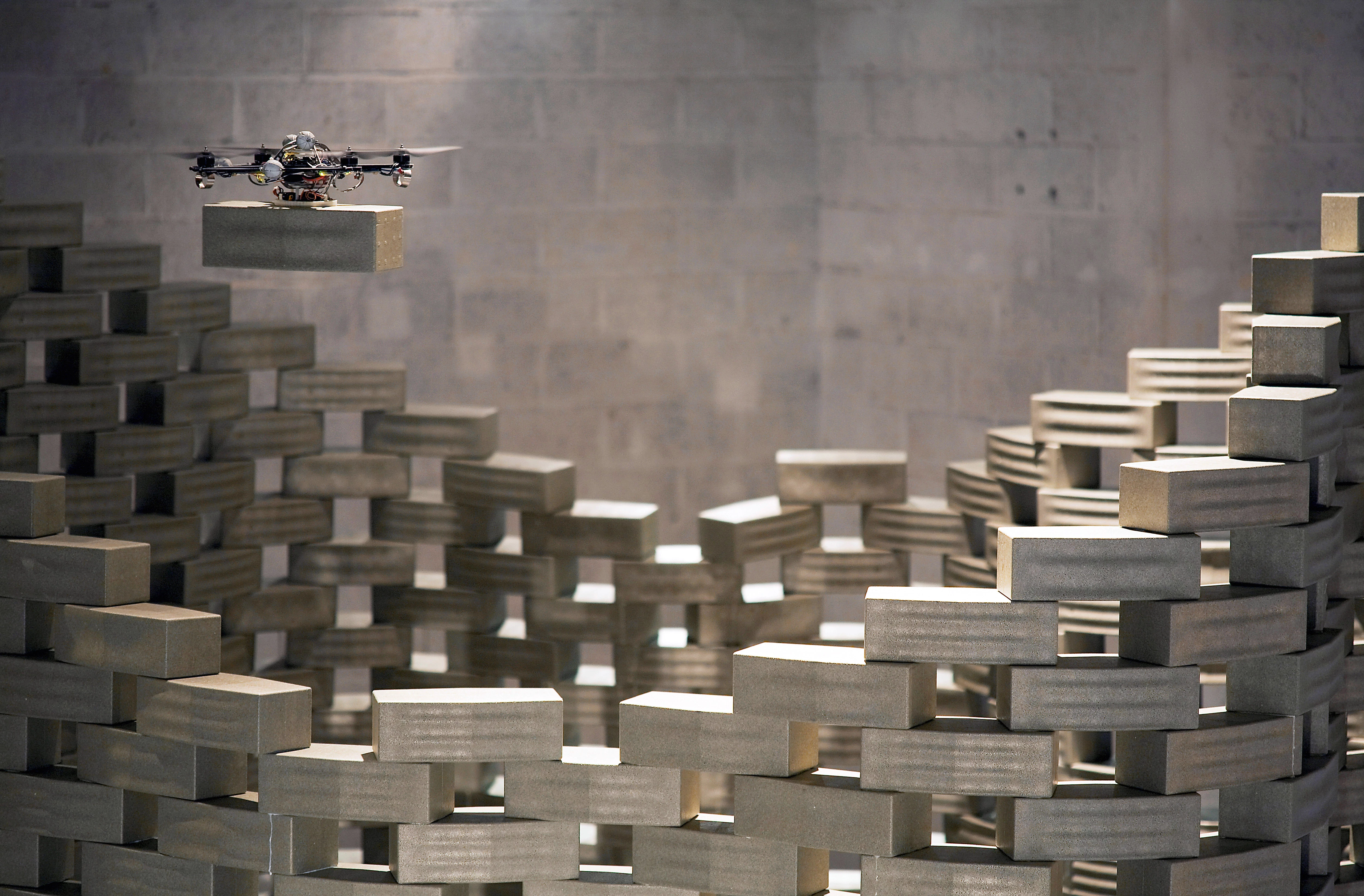The Troubled Craftsman
Craftsmanship in the 21st Century

The text reproduced here is an extract from The Craftsman (Yale University Press, Penguin Books, 2008).
The Craftsman summons an immediate image. Peering through a window into a carpenter’s shop, you see inside an elderly man surrounded by his apprentices and his tools. Order reigns within, parts of chairs are clamped neatly together, the fresh smell of wood shavings fills the room, the carpenter bends over his bench to make a fine incision for marquetry. The shop is menaced by a furniture factory down the road.
The craftsman might also be glimpsed at a nearby laboratory. There, a young lab technician is frowning at a table on which six dead rabbits are splayed on their backs, their bellies slit open. She is frowning because something has gone wrong with the injection she has given them; she is trying to figure out if she did the procedure wrong or if there is something wrong with the procedure.
A third craftsman might be heard in the town’s concert hall. There an orchestra is rehearsing with a visiting conductor; he works obsessively with the orchestra’s string section, going over and over a passage to make the musicians draw their bows at exactly the same speed across the strings. The string players are tired but also exhilarated because their sound is becoming coherent. The orchestra’s manager is worried; if the visiting conductor keeps on, the rehearsal will move into overtime, costing management extra wages. The conductor is oblivious.
The carpenter, lab technician, and conductor are all craftsmen because they are dedicated to good work for its own sake. Theirs is practical activity, but their labor is not simply a means to another end. The carpenter might sell more furniture if he worked faster; the technician might make do by passing the problem back to her boss; the visiting conductor might be more likely to be rehired if he watched the clock. It’s certainly possible to get by in life without dedication. The craftsman represents the special human condition of being engaged.
Craftsmanship is poorly understood when it is equated only with manual skill of the carpenter’s sort. German employs the word Handwerk, French the word artisanal to evoke the craftsman’s labors. English can be more inclusive, as in the term ‘statecraft’; Anton Chekhov applied the Russian word mastersvo equally to his craft as a doctor and as a writer. I want first to treat all such concrete practices as like laboratories in which sentiments and ideas can be investigated. A second aim would be to explore what happens when hand and head, technique and science, art and craft are separated. I will show how the head then suffers; both understanding and expression are impaired.

Knowledge and execution, science and technique, depend on the skills acquired by hand through the repetition of motions and their assimilation into the mind; the aim is a close connection between art and craft.
All craftsmanship is founded on skill developed to a high degree. By one commonly used measure, about ten thousand hours of experience are required to produce a master carpenter or musician. Various studies show that as skill progresses, it becomes more problem-attuned, like the lab technician worrying about procedure, whereas people with primitive levels of skill struggle more exclusively on getting things to work. At its higher reaches, technique is no longer a mechanical activity; people can feel fully and think deeply what they are doing once they do it well. It is at the level of mastery, I will show, that ethical problems of craft appear.
The emotional rewards craftsmanship holds out for attaining skill are twofold: people are anchored in tangible reality, and they can take pride in their work. But society has stood in the way of these rewards in the past and continues to do so today. At different moments in Western history practical activity has been demeaned, divorced from supposedly higher pursuits. Technical skill has been removed from imagination, tangible reality doubted by religion, pride in one’s work treated as a luxury. If the craftsman is special because he or she is an engaged human being, still the craftsman’s aspirations and trials hold up a mirror to these larger issues past and present.

Hand and Head Divided
The modern era is often described as a skills economy, but what exactly is a skill? The generic answer is that skill is a trained practice. In this, skill contrasts with the coup de foudre, the sudden inspiration. The lure of inspiration lies in part in the conviction that raw talent can take the place of training. Musical prodigies are often cited to support this conviction – and wrongly so. An infant musical prodigy like Wolfgang Amadeus Mozart did indeed harbor the capacity to remember large swatches of notes, but from ages five to seven Mozart learned how to train his great innate musical memory when he improvised at the keyboard.
He evolved methods for seeming to produce music spontaneously. The music he later wrote down again seems spontaneous because he wrote directly on the page with relatively few corrections, but Mozart’s letters show that he went over his scores again and again in his mind before setting them in ink.
We should be suspicious of claims for innate, untrained talent. “I could write a good novel if only I had the time” or “if only I could pull myself together” is usually a narcissist’s fantasy. Going over an action again and again, by contrast, enables self-criticism. Modern education fears repetitive learning as mind-numbing. Afraid of boring children, avid to present ever-different stimulation, the enlightened teacher may avoid routine – but thus deprives children of the experience of studying their own ingrained practice and modulating it from within.
Skill development depends on how repetition is organized. This is why in music, as in sports, the length of a practice session must be carefully judged: the number of times one repeats a piece can be no more than the individual’s attention span at a given stage. As skill expands, the capacity to sustain repetition increases. In music this is the so-called Isaac Stern rule, the great violinist declaring that the better your technique, the longer you can rehearse without becoming bored. There are “Eureka!” moments that turn the lock in a practice that has jammed, but they are embedded in routine.
As a person develops skill, the contents of what he or she repeats change. This seems obvious: in sports, repeating a tennis serve again and again, the player learns to aim the ball different ways; in music, the child Mozart, aged six and seven, was fascinated by the Neapolitan sixth chord progression, in fundamental position (the movement, say, from a C-major chord to an A-flat major chord). A few years after working with it, he became adept in inverting the shift to other positions.



The walls of rammed earth made by hand in Africa and Asia and those fabricated today in Europe show that craftsmanship - transcending materials, styles, and cultures - is here to stay.
These precepts about building skill through practice encounter a great obstacle in modern society. By this I refer to a way in which machines can be misused. The ‘mechanical’ equates in ordinary language with repetition of a static sort. Thanks to the revolution in microcomputing, however, modern machinery is not static; through feedback loops machines can learn from their experience. Yet machinery is misused when it deprives people themselves from learning through repetition. The smart machine can separate human mental understanding from repetitive, instructive, hands-on learning. When this occurs, conceptual human powers suffer.
Since the Industrial Revolution of the 18th century, the machine has seemed to threaten the work of artisan-craftsmen. The threat appeared physical; industrial machines never tired, they did the same work hour after hour without complaining. The modern machine’s threat to developing skill has a different character.
Craftsmanship and Computers
An example of this misuse occurs in CAD (computer-assisted design), the software program that allows engineers to design physical objects and architects to generate images of buildings onscreen. The technology traces back to the work of Ivan Sutherland, an engineer at the Massachusetts Institute of Technology who in 1963 figured out how a user could interact graphically with a computer. The modern material world could not exist without the marvels of CAD. It enables instant modeling of products from screws to automobiles, specifies precisely their engineering, and commands their actual production. In architectural work, however, this necessary technology also poses dangers of misuse.
In architectural work, the designer establishes on screen a series of points; the algorithms of the program connect the points as a line, in two or three dimensions. Computer-assisted design has become nearly universal in architectural offices because it is swift and precise. Among its virtues is the ability to rotate images so that the designer can see the house or office building from many points of view. Unlike a physical model, the screen model can be quickly lengthened, shrunk, or broken into parts. Sophisticated applications of CAD model the effects on a structure of the changing play of light, wind, or seasonal temperature change. Traditionally, architects have analyzed solid buildings in two ways, through plan and section. Computer-assisted design permits many other forms of analysis, such as taking a mental journey, onscreen, through the building’s airflows.
How could such a useful tool possibly be abused? When CAD first entered architectural teaching, replacing drawing by hand, a young architect at MIT observed that “when you draw a site, when you put in the counter lines and the trees, it becomes ingrained in your mind. You come to know the site in a way that is not possible with the computer... You get to know a terrain by tracing and retracing it, not by letting the computer ‘regenerate’ it for you.” This is not nostalgia: her observation addresses what gets lost mentally when screen work replaces physical drawing. As in other visual practices, architectural sketches are often pictures of possibility; in the process of crystallizing and refining them by hand, the designer proceeds just as a tennis player or musician does, gets deeply involved in it, matures thinking about it. The site, as this architect observes, “becomes ingrained in the mind.”
The architect Renzo Piano explains his own working procedure thus: “You start by sketching, then you do a drawing, then you make a model, and then you go to reality – you go to the site – and then you go back to drawing. You build up a kind of circularity between drawing and making and then back again.” About repetition and practice Piano observes, “This is very typical of the craftsman’s approach. You think and you do at the same time. You draw and you make. Drawing... is revisited. You do it, you redo it, and you redo it again.” This attaching, circular metamorphosis can be aborted by CAD. Once points are plotted onscreen, the algorithms do the drawing; misuse occurs if the process is a closed system, a static means-end – the “circularity” of which Piano speaks disappears. The physicist Victor Weisskopf once said to his MIT students who worked exclusively with computerized experiments: “When you show me that result, the computer understands the answer, but I don’t think you understand the answer.”

Computer-assisted design poses particular dangers for thinking about buildings. Because of the machine’s capacities for instant erasure and refiguring, the architect Elliot Felix observes, “each action is less consequent than it would be [on] paper... each will be less carefully considered.” Returning to physical drawing can overcome this danger; harder to counter is an issue about the materials of which the building is made. Flat computer screens cannot render well the textures of different materials or assist in choosing their colors, though the CAD programs can calculate to a marvel the precise amount of brick or steel a building might require. Drawing in bricks by hand, tedious though the process is, prompts the designer to think about their materiality, to engage with their solidity as against the blank, unmarked space on paper of a window. Computer-assisted design also impedes the designer in thinking about scale, as opposed to sheer size. Scale involves judgments of proportion; the sense of proportion onscreen appears to the designer as the relation of clusters of pixels. The object on screen can indeed be manipulated so that it is presented, for instance, from the vantage point of someone on the ground, but in this regard CAD is frequently misused: what appears onscreen is impossibly coherent, framed in a unified way that physical sight never is.
Troubles with materiality have a long pedigree in architecture. Few large-scale building projects before the industrial era had detailed working drawings of the precise sort CAD can produce today; Pope Sixtus V remade the Piazza del Popolo in Rome at the end of the 16th century by describing in conversation the buildings and public space he envisioned, a verbal instruction that left much room for the mason, glazier, and engineer to work freely and adaptively on the ground. Blueprints – inked designs in which erasure is possible but messy – acquired legal force by the late 19th century, making these images on paper equivalent to a lawyer’s contract. The blueprint signaled, moreover, one decisive disconnection between head and hand in design: the idea of a thing made complete in conception before it is constructed.
The tactile, the relational, and the incomplete are physical experiences that occur in the act of drawing. Drawing stands for a larger range of experiences, such as the way of writing that embraces editing and rewriting, or of playing music to explore again and again the puzzling qualities of a particular chord. The difficult and incomplete should be positive events; they should stimulate us as simulation and facile manipulation of complete objects cannot. The issue is more complicated than hand versus machine. Modern computer programs can indeed learn from their experience in an expanding fashion, because algorithms are rewritten through data feedback. The problem, as Victor Weisskopf says, is that people may let the machines do this learning, the person serving as a passive witness to and consumer of expanding competence, not participating in it. This is why Renzo Piano, the designer of complicated objects, returns in a circular fashion to drawing them by hand. Abuses of CAD illustrate how, when the head and the hand are separate, it is the head that suffers. Computer-assisted design might serve as an emblem of a challenge faced by modern society: how to think like craftsmen in making good use of technology.

Richard Sennett, an American sociologist, is Emeritus Professor at the London School of Economics.





